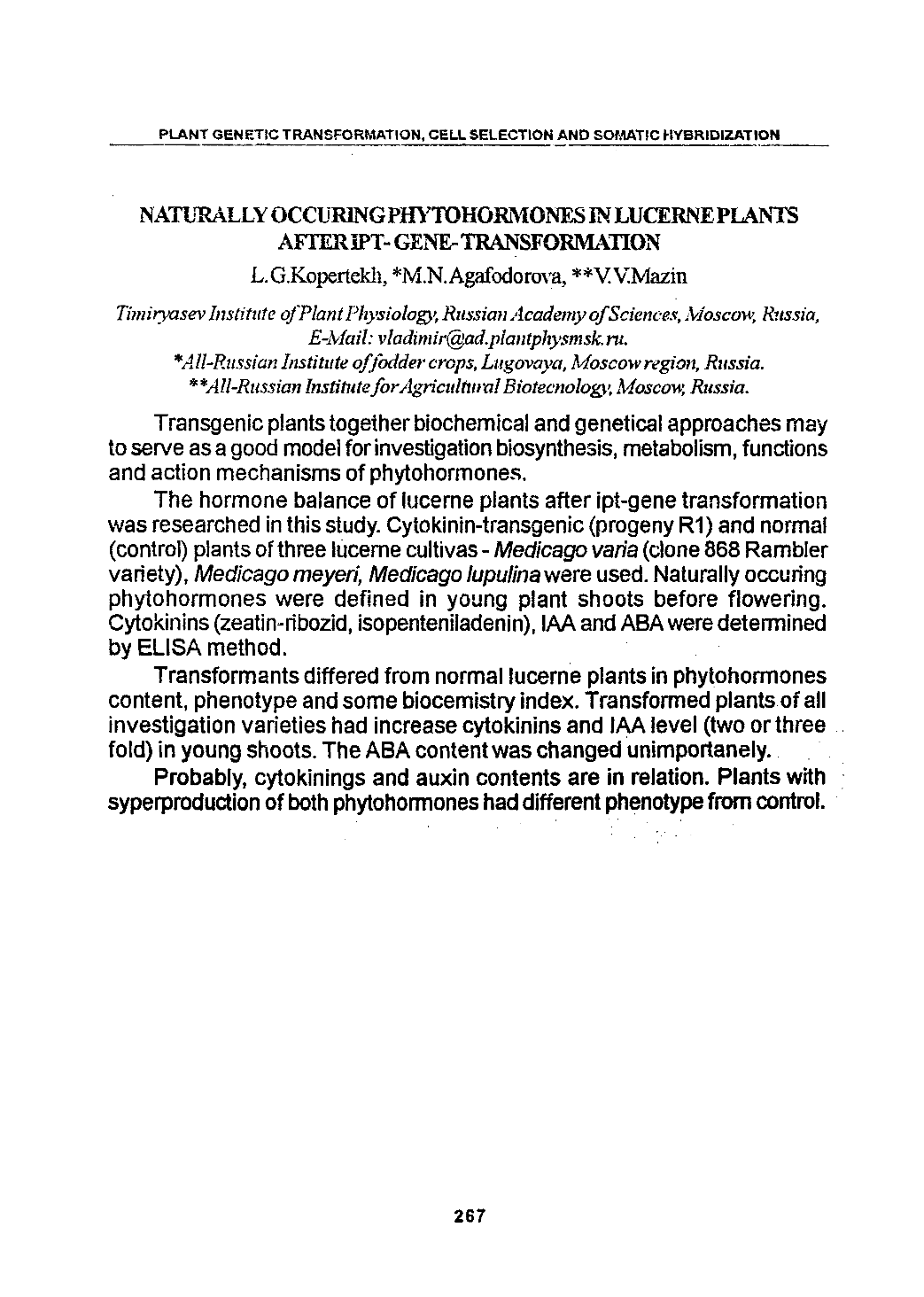

PLANT GENETIC TRANSFORMATION, CELL SELECTION AND SOMATIC HYBRIDIZATION
NATURALLYOCCURINGPHYTOHORMONESINLUCERNEPLANTS
AFTERIPT-GENE-TRANSFORMATION
L.G.Kopertekh, *M.N.Agafodorova, **V.V .Mazin
Timiryasev Institute ofPlant Physiology, Russian Academy o fSciences, Moscow, Russia,
E-Mail:
vladimir@ad.plantphys.msk.ru.
*All-Russian Institute o ffodder crops, Lugovaya, Moscow region, Russia.
**all-russian InstituteforAgriculturalBiotechnology, Moscow, Russia.
Transgenic plants together biochemical and genetical approaches may
to serve as a good mode! for investigation biosynthesis, metabolism, functions
and action mechanisms of phytohormones.
The hormone balance of lucerne plants after ipt-gene transformation
was researched in this study. Cytokinin-transgenic (progeny R1) and normal
(control) plants of three lucerne cultivas -
Medicago varia
(clone 868 Rambler
variety),
Medicago meyeri, Medicago lupulina
were used. Naturally occuring
phytohormones were defined in young plant shoots before flowering.
Cytokinins (zeatin-ribozid, isopenteniladenin), IAA and ABA were determined
by ELISA method.
Transformants differed from normal lucerne plants in phytohormones
content, phenotype and some biocemistry index. Transformed plants of all
investigation varieties had increase cytokinins and IAA level (two or three
fold) in young shoots. The ABA content was changed unimportanely.
Probably, cytokinings and auxin contents are in relation. Plants with
syperproduction of both phytohormones had different phenotype from control.
267
Научная электронная библиотека ЦНСХБ









